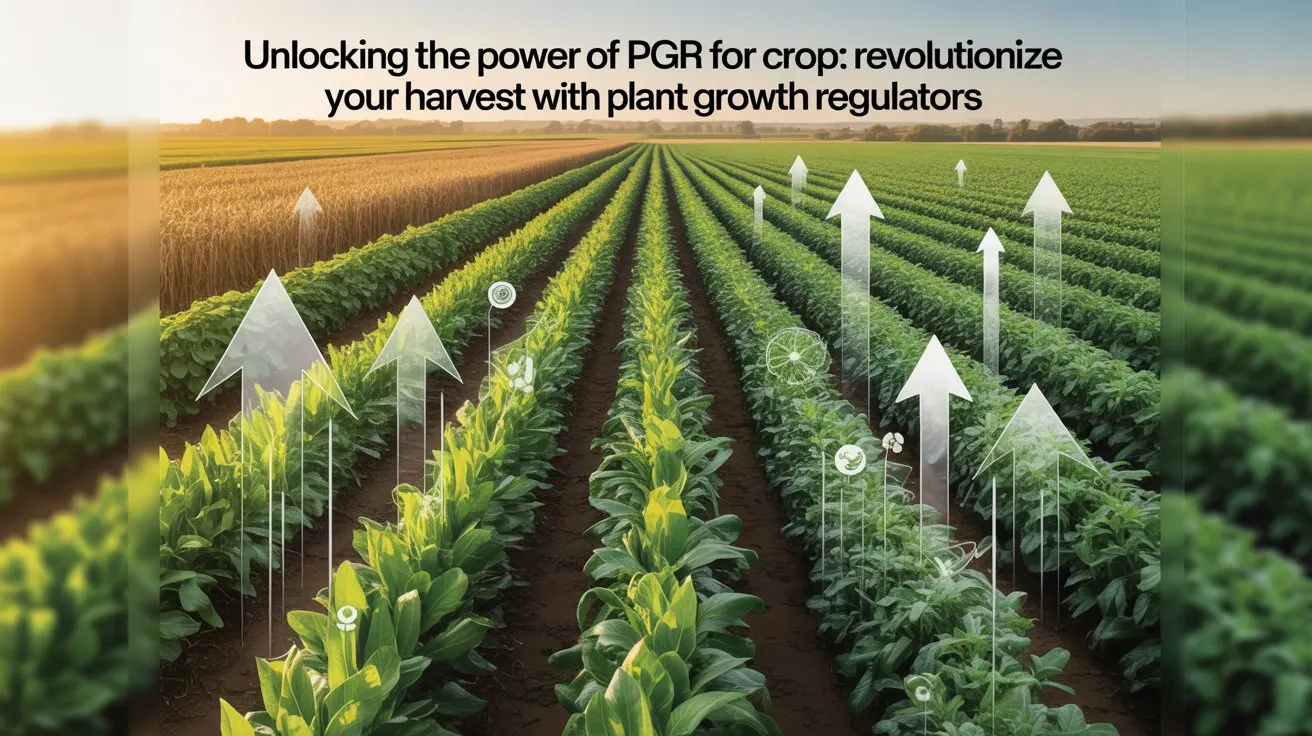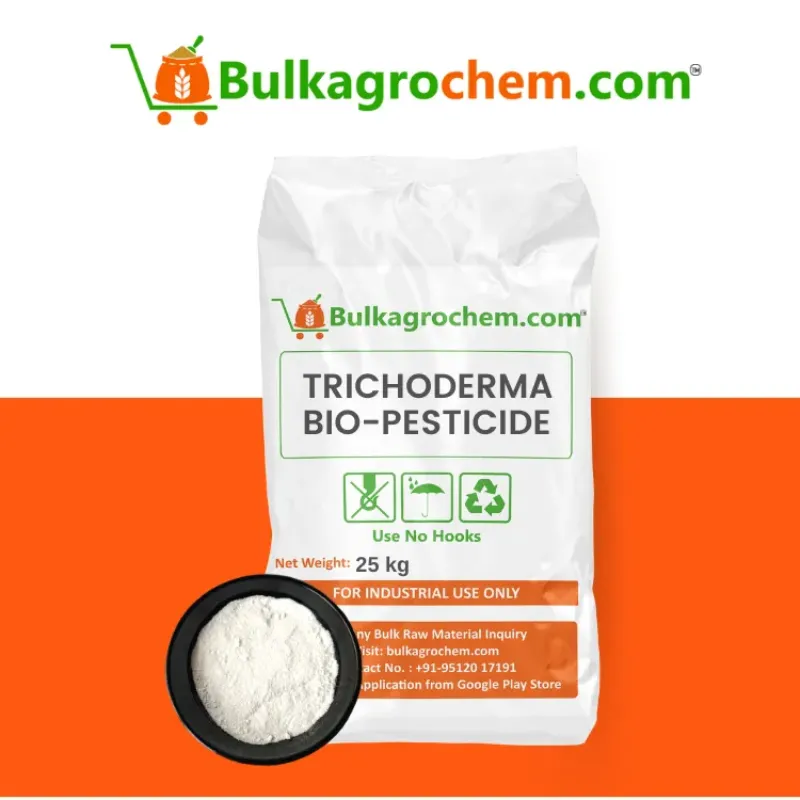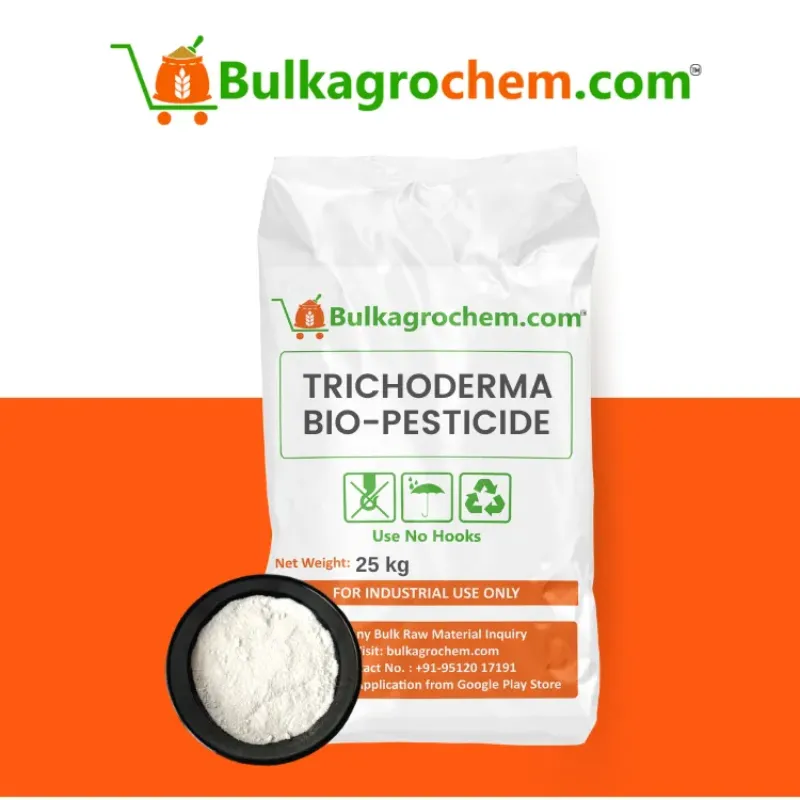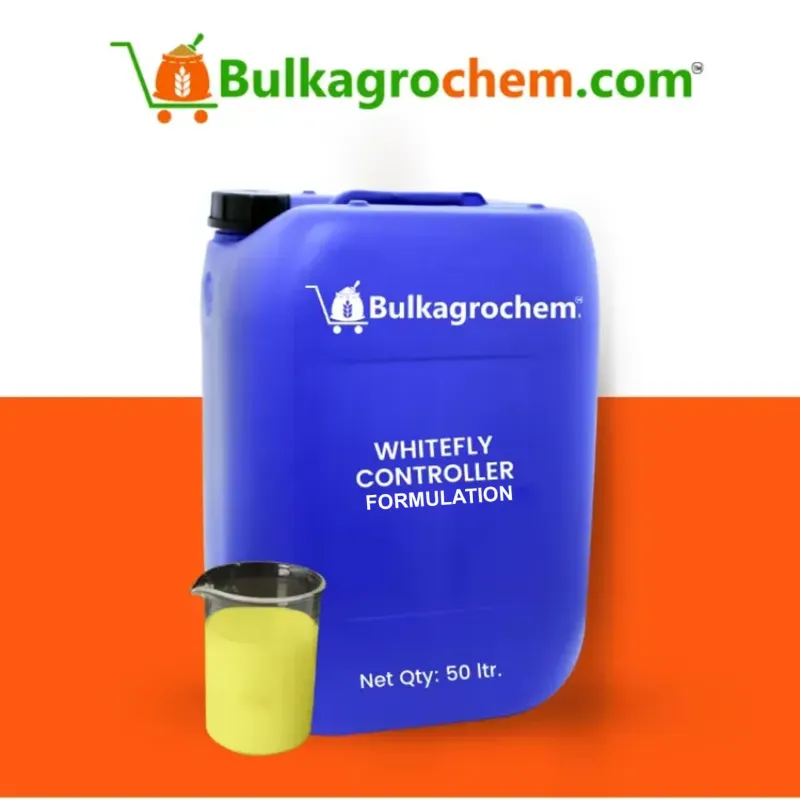The use of Plant Growth Regulators (PGRs) is very important when it comes to developing agricultural practices. They help the developer manage many aspects of plant growth and development and allow the developer to increase crop yield and improve crop quality. PGRs are either naturally occurring or synthetic substances that regulate growth and development by affecting plant physiological functions, such as seed germination, flowering, and fruit ripening. These PGRs are useful in covering crops reliably and affordably and are an important agricultural tool to achieve high rates of production, especially with good agricultural practices.
The use of PGR for crop growth and development covers a variety of operations such as to improve root development, flower induction, and speed up fruit maturation, PGRs help to maximise all potential of each crop available. The PGRs' role is important when it comes to regulating plant hormones that swiftly intervene with the process of cell division, elongation, and differentiation allowing plants to deliver improved results from environmental stresses such as heat stone or drought or if the crop is under animal or pest attack. Furthermore, controlling some aspects of the plant's life cycle may enable farmers to preserve the optimal health of the plant which may lead to better yields.
Introduction: Understanding the Role of PGR for Crop Growth
Plant Growth Regulators (PGRs) are important to maximizing crop growth and increasing yields. Whereas PGRs can alter plant growth at numerous stages of the plant development cycle (ensuring best use of light, nutrients, variety, and weather), they can maximize cropping productivity, cropping persistence, and cropping quality. PGRs alter physiological mechanisms such that cropping plants develop ideally, while engulfing environmental stressors, nutrient availability, and growth stages.
PGRs have impacts on growth performance and subsequently, increased quality; but this does not deny their associated risks in terms of PGR crop growth response to subsequent plant watering, temperature, nutrient deficiency, and excess. When the timing is right, PGRs may assist in lowering excessive inputs of chemical control, while improving quality and productivity.
What Are Plant Growth Regulators (PGRs) and How Do They Benefit Crops?
Plant Growth Regulators (PGRs) are naturally-occurring and synthetic materials, which change growth characteristics by influencing the plant hormones, auxins, gibberellins, cytokinins, and abscisic acid. These hormones are essential for the processes of seed germination, rooting, flowering, and fruit set.
PGRs can be beneficial to a crop in a number of ways, including:
- Higher Yields: PGRs will improve the productivity of crops, by enhancing root development and retaining flowers, which showcase higher yields.
- Stress Tolerance: PGRs will allow a plant to develop and produce better with an ability to resist drought, heat, and pest attacks resulting in stronger plants.
- Consistency: PGRs will give more consistency in how uniform they grow, this is especially important to crops like wheat and cotton to provide a marketable size and quality.
The Science Behind PGR for Crop Enhancement
Plant Growth Regulators (PGRs) operate at a chemical level by manipulating the balance of hormones in plants. Consider the following examples:
- Auxins: Auxins (like most plant hormones) promote cell elongation, which is necessary for root and shoot elongation. A proper implemented PGR for crop establishment will improve root vigor and nutrient uptake, because auxins greater promote cell elongation.
- Gibberellins: Gibberellins also promote cell elongation, but do so at the stem. The stem on most crops will elongate to their maximum height. In cotton, gibberellins will improve fiber development, and in wheat, gibberellins will enhance tillering and grain filling.
- Cytokinins: Cytokinins promote cell division, which may be highly desirable in terms of increased root growth, and improved flower and fruit development in crops like cotton and wheat.
The Best PGR for Cotton: Maximizing Cotton Yields with Targeted Application
Several factors are necessary to produce high-yielding cotton. The sown crop must have the appropriate climate for growth and development. It must be sown on good quality land, which ideally only features the right nutrients, moisture, tillage practices, and crop history. It then needs to be managed properly to achieve the best yield. One of the most powerful products in modern agriculture is a plant growth regulator (PGR). PGRs work at the cellular level of a plant's physiology and regulate economic processes such as flowering, fruiting, and drought resilience. For purposes of this paper we will use the term general PGRs in the context of PGR for annual growth in cotton to help farmers to manage a larger quantity along with the better quality the goal of increasing cotton yields and quality.
What is the Best PGR for Cotton and Why It Works
There are many PGR (plant growth regulator) types available for cotton production. Each type of PGR has a different area of influence over the plant's production and development. Nevertheless, there are some PGRs that are better suited to improve cotton production.
- Gibberellins (GA): Gibberellins are important throughout the cotton plant for stem elongation and flower development. Gibberellins can increase boll size, improve fiber length, and result in more uniform harvests. Generally, the best PGR for cotton ought to consist of formulations that contain ga, which facilitates substantial growth of cotton plants and improved fiber quality.
- Cytokinins: Cytokinins are also important because they aid cell division, thus helpful for flowers and bolls. Specifically, PGRs containing cytokinins are helpful in delaying senescence (aging) of the cotton plant, resulting in improved overall harvest.
- Auxins: auxins is a type of PGR which aids root development in the crop, especially if the soil in the cotton fields is less than ideal. A stronger root system provides for better nutrient uptake, ultimately contributing to more growth and yield.
- Ethylene: Ethylene considered important for ripening in agriculture, is also applicable in stimulating fruit set in cotton and alleviating shedding. Controlled application of ethylene allows keeping more bolls on the plant, to maximize yield potential.
How to Use PGRs for Cotton: Best Application Practices
The proper use of PGRs is required to get the best benefits from them. Here are the recommendations for PGR use:
- Application Time: The time to apply PGRs is important for the desired effect. Gibberellins will be applied early in a flower cycle to enhance flower retention and boll development. Cytokinin treatments are applied while the plant is in peak flower and at peak boll development. The treatments are provided to improve the plant's ability to set fruit and retain bolls for development.
- Application Method: While PGRs can be applied through soil and foliar methods of application. Foliar application is often the preferred method of application for cotton. The foliar application allows faster absorption and quicker effects on flower retention and boll formation. Care should be taken to ensure that application is uniformly done and does not create uneven growth or plant damage.
- Dosage: PGR over-application as opposed to under-application can negatively affect results. Primary important is following manufacturer recommendations for dosage rates to prevent over-regulation which can cause damage or stress to the plant or slow development. Farmers must calibrate sprayers to be as accurate as possible.
- Combination with Fertilizer: The biggest issue with combined PGR fertilizer applications is timing and compatibility. In some cases, PGR applications can be applied in combination or alongside fertilizers to enhance nutrient uptake. Fertilizer applications should be made early in plant development sequence.
H3 Impact of PGR on Cotton Yield and Quality
The impact of PGR for cotton on yield and quality is significant. Here's how they contribute to both:
- Increased Yield: The primary benefit of using best PGR for cotton is an increase in yield. By promoting more robust root growth and enhancing flower retention, PGRs increase the number of bolls produced per plant. Gibberellins, in particular, are known to increase boll size and overall cotton production.
- Improved Quality: PGRs can also improve cotton quality. Cytokinins promote better boll development, which leads to uniform cotton fiber. Stronger roots, supported by auxin applications, ensure that the cotton plant receives enough nutrients, resulting in better fiber strength and length. This ultimately improves the quality of harvested cotton, making it more desirable in the market.
- Stress Resistance: PGRs enhance the plant's ability to tolerate environmental stresses like drought, heat, and pest attacks. The better the cotton plant’s resilience, the more likely it is to produce a healthy, high-yielding crop. PGRs such as gibberellins and cytokinins can help mitigate the effects of these stresses by boosting the plant's natural defense mechanisms.
- Uniform Growth: PGRs help regulate growth to ensure that cotton plants grow uniformly, which is essential for even maturation. This not only enhances yield but also ensures that all the cotton bolls mature at the same time, making harvesting more efficient.
H2 The Best PGR for Wheat: Boosting Wheat Growth and Yield with Plant Growth Regulators
Plant Growth Regulators (PGRs) play an essential role in modern wheat farming. Wheat, a staple crop, is highly sensitive to various environmental stresses, and using the right PGR can significantly enhance yield and quality. PGR for crop growth helps optimize plant development at critical stages, such as seedling establishment, flowering, and grain filling. This results in healthier plants, higher resistance to stresses, and increased wheat productivity.
In this article, we will explore the best PGR for wheat, how to apply them effectively, and the strategies to maximize their impact. We will also focus on the timing, dosage, and efficiency of PGR application to ensure optimal wheat growth.
Why Wheat Farming Benefits from PGR Application
Wheat farming benefits from PGR for crop management due to the following reasons:
- Increased Yield: PGRs such as gibberellins and cytokinins can help increase the number of grains per head and improve grain size. Gibberellins are particularly useful for elongating stems and promoting higher tiller numbers, which directly leads to higher yields.
- Improved Stress Resistance: Wheat is highly susceptible to environmental stresses such as drought, heat, and disease. PGRs enhance the plant’s resistance to these stresses, particularly during flowering and grain filling. Cytokinins, for instance, help delay senescence, thereby increasing the duration of grain filling.
- Optimized Growth and Development: PGRs can regulate plant growth to enhance root development, improve nutrient uptake, and ensure a more uniform growth pattern. This leads to better crop establishment and improved competition for nutrients, resulting in healthier plants.
- Enhanced Grain Quality: PGRs can improve the overall grain quality of wheat. By stimulating better development and minimizing stress effects, the resulting wheat is of higher quality, with better milling properties.
How to Apply PGRs for Optimal Wheat Growth
Effective application of PGR for crop growth, specifically for wheat, requires knowledge of the plant's growth stages and the types of PGRs that are most beneficial at each stage. Here's how to ensure optimal wheat growth using PGRs:
- Identify the Right Growth Stage: Wheat growth progresses through different stages, including germination, tillering, stem elongation, heading, and grain filling. The optimal application time for PGRs largely depends on the specific growth phase.
- Choose the Correct PGR: The best PGR for wheat varies by growth stage.
- Gibberellins (GA): Best applied during stem elongation and heading to boost tiller development and improve seed head formation.
- Cytokinins: Useful during the tillering and grain filling stages to promote branching, tiller formation, and maintain photosynthesis during grain development.
- Auxins: Can help with root development, especially during early growth phases when good root establishment is critical.
- Dosage and Application Method: The correct dosage is critical. Over-application of PGRs can lead to undesirable growth patterns, while under-application may not provide the intended benefits. Always follow manufacturer recommendations for dosage. Foliar sprays are the most common method of application for PGRs in wheat farming.
PGR Application Strategies for Wheat: Timing, Dosage, and Efficiency
FAQs
Q1. What is the best PGR for cotton?
The best PGR for cotton is typically a combination of gibberellins for promoting fiber elongation and cytokinins to improve branching and boll retention. These PGRs help enhance cotton growth and maximize yield potential.
Q2. Can PGRs be used on all crops, including wheat?
Yes, PGRs for crops like wheat are widely used across different plants. They help regulate growth, improve stress resistance, and boost yield. The specific type of PGR will vary depending on the crop and growth stage.
Q3. When is the best time to apply PGRs for wheat?
The best time to apply PGRs for wheat is during the tillering stage to enhance branching and again during stem elongation to boost tiller growth. Gibberellins and cytokinins are most effective during these stages.
Q4. Can PGRs improve the quality of cotton fiber?
Yes, applying PGRs for cotton can significantly improve fiber quality. Gibberellins, in particular, promote longer fibers, which enhance the quality of the cotton produced by improving its texture and strength.
Q5. How do PGRs affect wheat yield?
PGRs for wheat improve yield by enhancing tiller production, promoting more uniform growth, and increasing the number of grains per plant. They also help wheat plants withstand environmental stresses, improving overall productivity.
Conclusion: Embrace PGR for Crop Success – Maximize Your Yield and Quality Today
Incorporating PGR for crops like cotton and wheat can lead to significant improvements in yield and quality. By selecting the best PGR for cotton or the best PGR for wheat, you can optimize plant growth, enhance stress resistance, and promote healthier, more robust crops. Applying PGRs at the right time and in the right doses will help ensure that you maximize your harvest while maintaining sustainable farming practices. Don’t miss out on the opportunity to transform your crop management strategies with these powerful growth regulators today.




